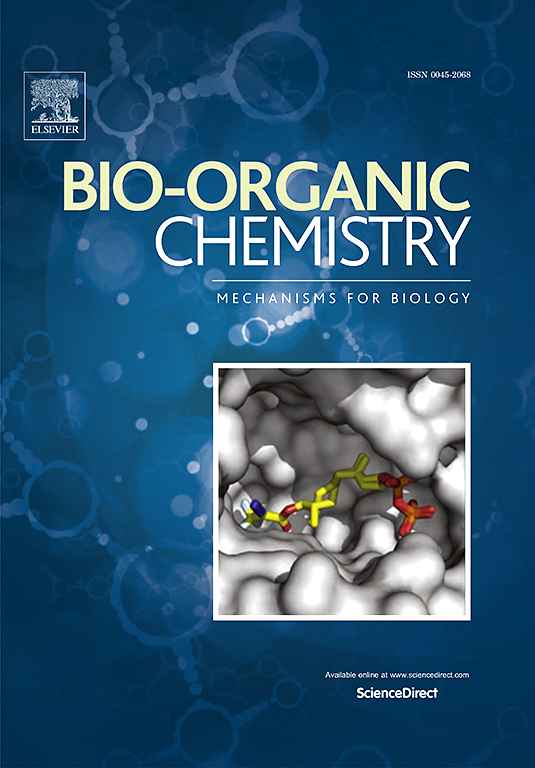Activation of the 20S proteasome as a possible strategy to counteract amylin oligomerization in type 2 diabetes
IF 4.5
2区 医学
Q1 BIOCHEMISTRY & MOLECULAR BIOLOGY
引用次数: 0
Abstract
Human amylin, called also islet amyloid polypeptide (hIAPP), is the principal constituent of amyloid deposits in the pancreatic islets. Together with hyperglycemia, hIAPP-derived oligomers and aggregates are important culprits in type 2 diabetes mellitus (T2DM). Preventing aggregation, and in particular inhibiting the formation and/or stimulating degradation of toxic amylin oligomers formed early in the process, may reduce the negative effects of T2DM. Such therapeutic intervention may be enabled by activation of the 20S proteasome, a proteolytic system responsible for digesting proteins that are damaged or natively exhibit aggregation tendencies. In this work, we showed that in the lag phase of the aggregation process, soluble oligomers of small size (dimer to heptamer) were present alongside the amylin monomer. These oligomers inhibited the activity of the human 20S proteasome (h20S). To counteract this inhibition, we designed two activators that proved to be effective in restoring the peptidase efficiency of h20S to basal levels and even stimulating the enzyme to degrade the fluorogenic substrate more efficiently. They showed this effect both against isolated h20S and in cell lysate.

激活20S蛋白酶体作为对抗2型糖尿病胰淀素寡聚化的可能策略。
人胰淀素,又称胰岛淀粉样蛋白多肽(hIAPP),是胰岛淀粉样蛋白沉积的主要成分。与高血糖一起,hiapp衍生的低聚物和聚集物是2型糖尿病(T2DM)的重要罪魁祸首。防止聚集,特别是抑制早期形成的有毒胰淀素低聚物的形成和/或刺激其降解,可能会减少T2DM的负面影响。这种治疗干预可以通过激活20S蛋白酶体来实现,20S蛋白酶体是一种蛋白质水解系统,负责消化受损或天然表现出聚集倾向的蛋白质。在这项工作中,我们发现在聚集过程的滞后阶段,小尺寸的可溶性低聚物(二聚体到七聚体)与胰淀素单体一起存在。这些低聚物抑制人20S蛋白酶体(h20S)的活性。为了抵消这种抑制,我们设计了两种激活剂,证明它们可以有效地将h20S的肽酶效率恢复到基础水平,甚至可以刺激酶更有效地降解荧光底物。他们在分离的h20S和细胞裂解液中都显示了这种作用。
本文章由计算机程序翻译,如有差异,请以英文原文为准。
求助全文
约1分钟内获得全文
求助全文
来源期刊

Bioorganic Chemistry
生物-生化与分子生物学
CiteScore
9.70
自引率
3.90%
发文量
679
审稿时长
31 days
期刊介绍:
Bioorganic Chemistry publishes research that addresses biological questions at the molecular level, using organic chemistry and principles of physical organic chemistry. The scope of the journal covers a range of topics at the organic chemistry-biology interface, including: enzyme catalysis, biotransformation and enzyme inhibition; nucleic acids chemistry; medicinal chemistry; natural product chemistry, natural product synthesis and natural product biosynthesis; antimicrobial agents; lipid and peptide chemistry; biophysical chemistry; biological probes; bio-orthogonal chemistry and biomimetic chemistry.
For manuscripts dealing with synthetic bioactive compounds, the Journal requires that the molecular target of the compounds described must be known, and must be demonstrated experimentally in the manuscript. For studies involving natural products, if the molecular target is unknown, some data beyond simple cell-based toxicity studies to provide insight into the mechanism of action is required. Studies supported by molecular docking are welcome, but must be supported by experimental data. The Journal does not consider manuscripts that are purely theoretical or computational in nature.
The Journal publishes regular articles, short communications and reviews. Reviews are normally invited by Editors or Editorial Board members. Authors of unsolicited reviews should first contact an Editor or Editorial Board member to determine whether the proposed article is within the scope of the Journal.
 求助内容:
求助内容: 应助结果提醒方式:
应助结果提醒方式:


